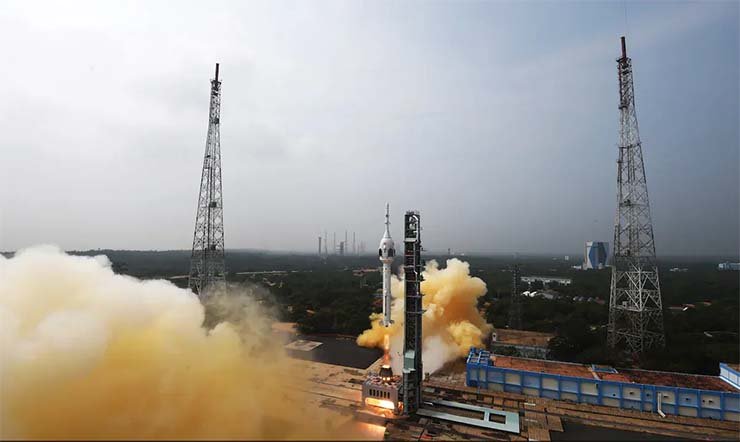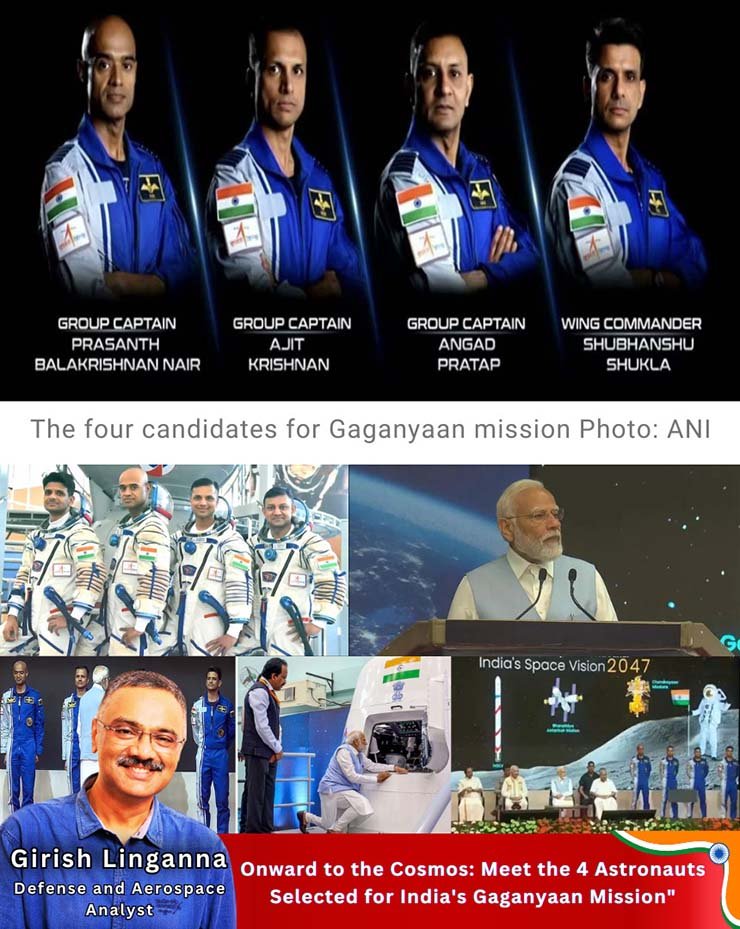
On February 27, Prime Minister Narendra Modi unveiled the identities of the four astronauts chosen for the Gaganyaan mission, marking India’s inaugural manned spaceflight. The announcement was made during his visit to the Vikram Sarabhai Space Centre located in Thiruvananthapuram, Kerala, under the auspices of the Indian Space Research Organisation (ISRO).
The four pilots, who received training in Russia, are now completing their mission preparation at a dedicated ISRO facility in India. Scheduled to launch no earlier than 2025, this mission will position India as the fourth nation, following the United States, Russia, and China, to achieve the capability of sending humans to space independently.
Since Wing Commander Rakesh Sharma’s space journey aboard the Russian Soyuz T-11 in April 1984, these four fighter pilots will be the first Indians to venture into space. While individuals of Indian descent, such as Kalpana Chawla and Sunita Williams, have participated in space missions, the four men named on Tuesday, February 27 will be the first astronauts on a mission that is both developed and conducted solely by India.
Group Captain Prashanth Balakrishnan Nair, Angad Prathap, Ajit Krishnan, and Shubanshu Shukla have been chosen as astronauts for India’s inaugural manned spaceflight. Serving in the Indian Air Force (IAF) as either wing commanders or group captains, they bring a wealth of experience as test pilots. This background ensures they are adept at quickly reacting to unforeseen challenges, a critical skill for their upcoming space mission.
Group Captain Prashanth Balakrishnan Nair, Angad Prathap, Ajit Krishnan, and Shubanshu Shukla have been chosen as astronauts for India’s inaugural manned spaceflight. Serving in the Indian Air Force (IAF) as either wing commanders or group captains, they bring a wealth of experience as test pilots
Prime Minister Narendra Modi and ISRO’s head, S Somanath, affixed badges adorned with golden wings to their clothing, with Prime Minister Modi hailing them as the “pride of India”. Ultimately, only three out of the four selected astronauts will participate in the space voyage as part of the Gaganyaan mission.
How did the four Indian astronauts attain this remarkable milestone? What was the process involved in their selection, and how do they plan to successfully accomplish Mission Gaganyaan?
The four chosen astronauts are members of the Indian Air Force and serve as test pilots. However, their selection was the outcome of a rigorous and thorough selection process. The Institute of Aerospace Medicine (IAM),in Bangalore. which operates under the Indian Air Force (IAF), conducted the selection of these astronauts.
Numerous Air Force pilots underwent the test to qualify as astronauts. Following the initial phase of selection in September 2019, a total of 12 individuals were chosen. These candidates underwent a series of medical, aeromedical, and psychological evaluations.
Subsequently, after multiple phases of the selection process, the Institute of Aerospace Medicine (IAM) identified 4 individuals from the initial group of 12. These selected individuals were then dispatched to Russia to undergo training. From February 2020 to March 2021, the four astronauts underwent a 13-month training program at the Yuri Gagarin Cosmonaut Training Center in Russia.

Additionally, they received survival training in Russia, preparing them to withstand various scenarios they might encounter during landing. This training was designed to equip them with the skills necessary for survival in diverse environments, including mountains, forests, deserts, or oceans, ensuring their readiness for any landing situation.
The four astronauts underwent extensive training in aerobatic flying to ensure they are well-prepared for the challenges of manoeuvring at approximately 400 kilometres above the Earth. This training aimed to equip them both mentally and physically, ensuring they can handle the complexities of aerobatic flight in space without any issues.
Aerobatic flying refers to the execution of extraordinary manoeuvres in an aircraft, such as loops, rolls, and spins, often performed during air shows or pilot training for enhancing skill and precision.
Currently, the astronauts are at the Bengaluru facility, actively engaging in various preparatory activities for the mission, as stated by ISRO. Their training regimen includes simulation drills, physical and medical fitness sessions, yoga practices, and instruction on how to wear and operate their flight suits.
The Gaganyaan mission aims to showcase India’s capability in manned space exploration by sending astronauts to an orbit 400 kilometres above the Earth for a duration of three days. Following their mission, they will safely return to Earth, with a landing planned in the waters off the coast of India.
The Gaganyaan mission aims to showcase India’s capability in manned space exploration by sending astronauts to an orbit 400 kilometres above the Earth for a duration of three days
Gaganyaan has sparked considerable excitement in India, despite its emergence long after the Soviet Union and the US initiated their journeys to low Earth orbit, both having been active in space exploration since 1961. China joined this elite group as the third nation to achieve space travel in October 2003, with a mission that lasted 21 hours and completed 14 orbits around Earth. Moreover, both the US and China have established fully functional space stations in low Earth orbit.
(The writer is a Defence, Aerospace and Political Analyst based in Bengaluru. He is also Director of ADD Engineering Components, India, Pvt. Ltd, a subsidiary of ADD Engineering GmbH, Germany. You can reach out to him at: girishlinganna@gmail.com)















